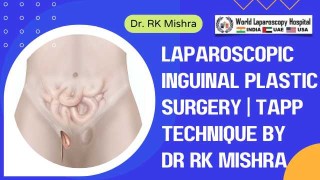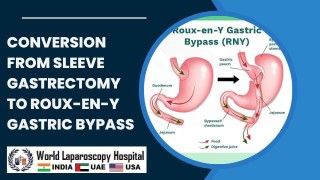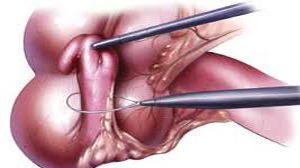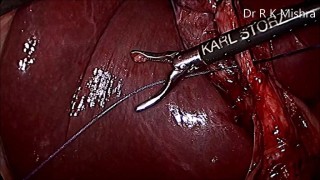Minimally Invasive Surgery: Simultaneous Cholecystectomy and Appendectomy through a Single Incision
Add to
Share
1,595 views
Report
2 years ago
Description
Introduction: In recent years, there have been significant advancements in surgical techniques aimed at reducing patient discomfort, scarring, and recovery time. One such innovation is the performance of simultaneous cholecystectomy (gallbladder removal) and appendectomy (appendix removal) through a single incision. This minimally invasive approach, also known as "single-port" or "single-incision" surgery, offers several potential benefits over traditional open or laparoscopic procedures. In this article, we will explore the concept, advantages, and considerations associated with simultaneous cholecystectomy and appendectomy through a single incision. Overview of Cholecystectomy: Cholecystectomy is a common surgical procedure performed to remove the gallbladder, usually due to gallstones or other gallbladder-related issues. Traditionally, cholecystectomy was performed using an open surgical technique, which required a large incision and resulted in longer recovery times and more visible scarring. The introduction of laparoscopic cholecystectomy revolutionized the field by enabling surgeons to perform the procedure through small incisions using specialized instruments and a camera. Laparoscopic cholecystectomy has become the standard approach for gallbladder removal due to its minimally invasive nature and reduced postoperative pain. Overview of Appendectomy: Appendectomy involves the removal of the appendix, typically due to appendicitis, an inflammation of the appendix. Similar to cholecystectomy, the traditional approach to appendectomy involved an open surgical procedure. With advancements in surgical techniques, laparoscopic appendectomy gained popularity as it offered smaller incisions, less pain, and quicker recovery compared to open surgery. Simultaneous Cholecystectomy and Appendectomy through a Single Incision: The concept of performing both cholecystectomy and appendectomy through a single incision builds upon the benefits of minimally invasive surgery while reducing the number of incisions and potential postoperative complications. In this approach, a single small incision is made, usually in the umbilicus (belly button), through which specialized instruments and a camera are inserted. This technique allows the surgeon to access both the gallbladder and appendix simultaneously, perform the necessary procedures, and remove the diseased organs through the same incision. Advantages of Simultaneous Single-Incision Surgery: Reduced scarring: By utilizing a single incision, the visible scarring is minimized compared to multiple incisions required in traditional laparoscopic procedures. Less postoperative pain: Single-incision surgery results in reduced trauma to the abdominal wall, leading to decreased postoperative pain and discomfort. Faster recovery: Patients undergoing simultaneous single-incision surgery may experience quicker recovery times and a faster return to their daily activities. Cost-effective: Performing both procedures in a single operation can potentially reduce hospital stays, anesthesia time, and overall healthcare costs. Considerations and Limitations: Surgeon expertise: Simultaneous cholecystectomy and appendectomy through a single incision require specialized skills and experience on the part of the surgeon. Patient selection: Not all patients are suitable candidates for this approach. Factors such as the extent of disease, body habitus, and previous abdominal surgeries must be considered. Potential for increased operative time: Combining two procedures in a single operation may increase the overall surgical time compared to performing them individually. Conclusion: Simultaneous cholecystectomy and appendectomy through a single incision represents an innovative approach to minimize invasiveness and optimize patient outcomes. While offering potential advantages such as reduced scarring, less pain, and faster recovery, this technique requires careful patient selection and surgeon expertise. As surgical techniques continue to evolve and advancements are made in the field of minimally invasive surgery, the simultaneous single-incision approach holds promise for selected patients who require both cholecystectomy and appendectomy. However, it is important to note that the availability and adoption of this technique may vary among healthcare facilities and surgeons. Not all hospitals or surgeons may offer or be trained in performing simultaneous cholecystectomy and appendectomy through a single incision. Therefore, patients considering this approach should consult with their healthcare providers to determine the best course of action based on their individual circumstances. Future research and clinical studies will continue to evaluate the efficacy, safety, and long-term outcomes of simultaneous cholecystectomy and appendectomy through a single incision. These investigations will provide valuable insights and further refine the technique, potentially expanding its application to a broader range of patients. In conclusion, simultaneous cholecystectomy and appendectomy through a single incision represents an exciting advancement in minimally invasive surgery. It offers the potential for reduced scarring, less postoperative pain, and faster recovery for eligible patients. However, the decision to undergo this approach should be made in consultation with a healthcare professional who can assess the individual patient's condition and determine the most appropriate surgical strategy.
Similar Videos






